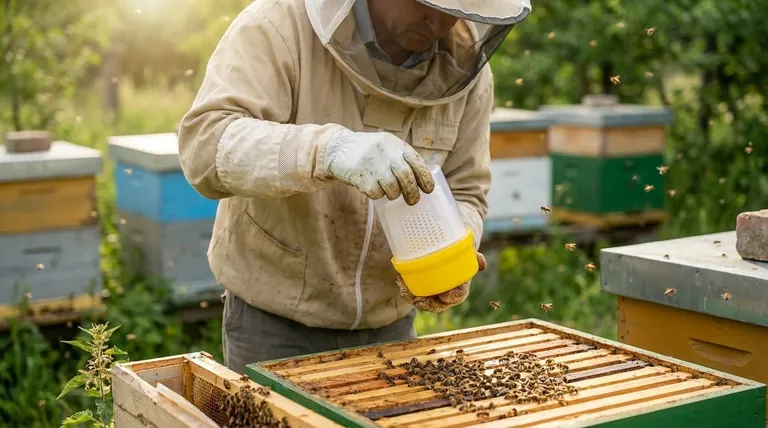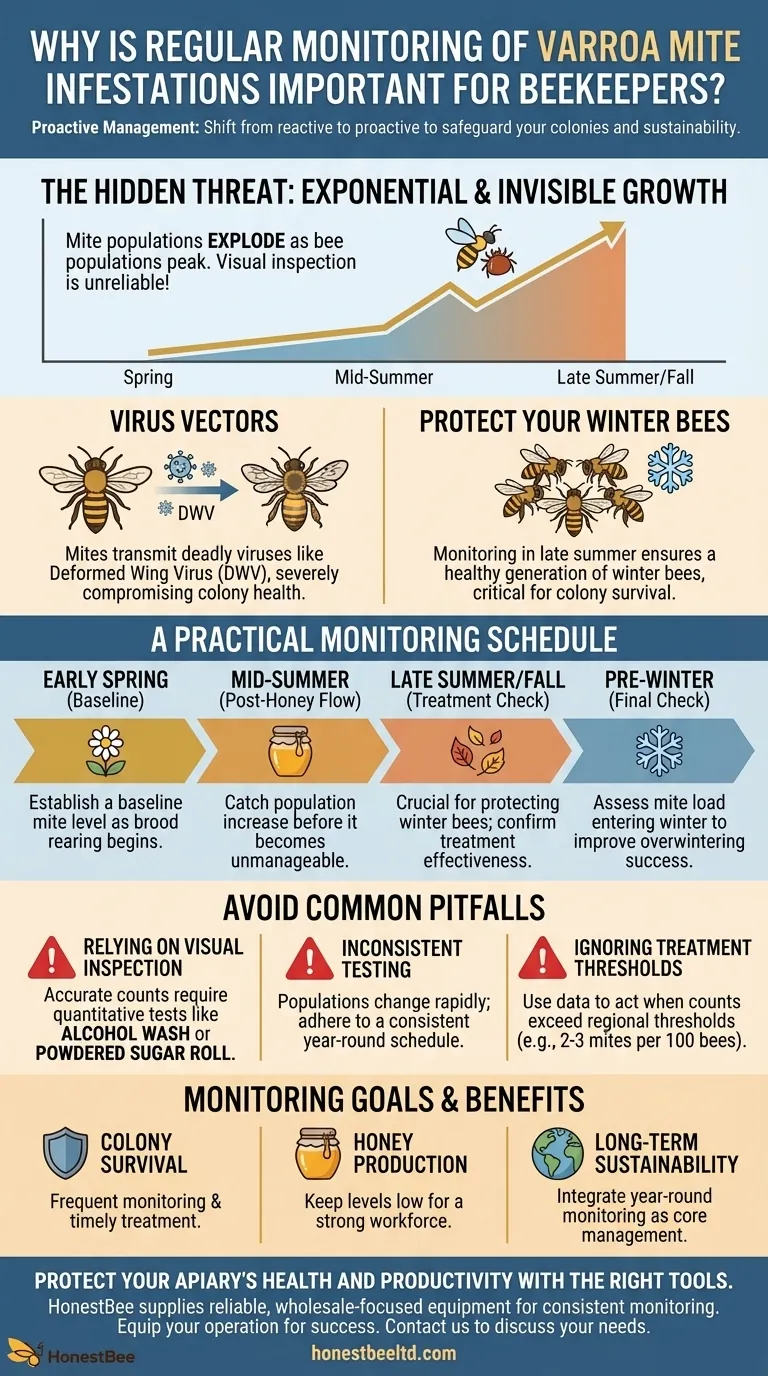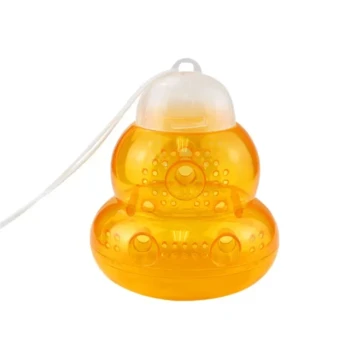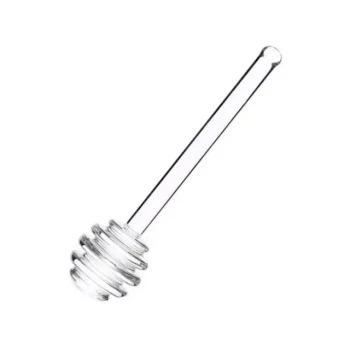In short, regular Varroa mite monitoring is essential because it allows beekeepers to shift from a reactive to a proactive management strategy. It provides the critical data needed to intervene at the right time, preventing colony-destroying infestations before they become visually apparent and safeguarding the long-term health and sustainability of your bees.
The core problem for beekeepers is that Varroa mite populations grow exponentially and invisibly. Relying on visual inspection is a recipe for failure; systematic monitoring is the only reliable way to understand the true threat level inside your hive and act before it's too late.

The Hidden Threat: Why You Can't "Eyeball" Mite Levels
Many beekeepers make the critical mistake of assuming their colonies are healthy if they don't see mites on the backs of bees. This is a dangerous assumption that often leads to catastrophic winter losses.
The Exponential Growth Curve
Varroa mite populations build slowly in the spring but explode in mid to late summer as the bee population peaks and drone brood becomes abundant. A seemingly low mite count in May can become an overwhelming infestation by August.
Early and frequent monitoring catches this population increase before it reaches a critical tipping point from which the colony cannot recover.
Mites are Virus Vectors
The primary damage from Varroa is not the mite itself feeding on the bee's fat body tissue, but the host of deadly viruses it transmits, most notably Deformed Wing Virus (DWV).
High mite levels directly correlate with high virus loads in the colony. By the time you see bees with deformed wings, the virus is rampant and the colony's health is severely compromised. Monitoring is a proxy for measuring the virus load.
Protecting Your Winter Bees
The bees raised in late summer and early fall are the "winter bees." These bees are physiologically different, with more fat body reserves, and are responsible for keeping the queen and cluster alive until spring.
If these bees are weakened by mites and viruses during their development, they will not live long enough to survive the winter. Monitoring and treating in late summer is crucial for ensuring a healthy generation of winter bees.
A Practical Monitoring Schedule
A consistent schedule is your best defense. Monitoring should be a routine part of your apiary management, not an afterthought. Experts advise testing at least three to four key times per year.
Early Spring Assessment
Conduct a test as soon as your colonies are actively raising brood. This establishes a baseline mite level for the year. The goal is to start the main season with the lowest possible mite count.
Mid-Summer Check (Post-Honey Flow)
After you've pulled your main honey crop is a perfect time to monitor. This is often when mite populations begin their exponential growth phase. Knowing your numbers here allows you to intervene before the population becomes unmanageable.
Late Summer/Fall Treatment Check
Whether you treated your hives or not, it's critical to monitor in the early fall. If you did treat, this confirms your treatment was effective. If you didn't, it tells you if you need to perform an emergency treatment to save the winter bees.
Pre-Winter Final Check
A final test in late autumn (e.g., November for many climates) gives you a last look at the mite load your colony is carrying into winter. This data is invaluable for understanding and improving your overwintering success year after year.
Understanding the Common Pitfalls
Simply going through the motions of monitoring is not enough. To be effective, you must avoid common mistakes that can give you a false sense of security.
Pitfall: Relying on Visual Inspection
To reiterate, if you can easily see mites on adult bees, your infestation is already severe. Proper monitoring requires a quantitative test, such as an alcohol wash or powdered sugar roll, to get an accurate mite-per-bee count.
Pitfall: Inconsistent or Infrequent Testing
Mite populations can change dramatically in just a few weeks. A single test in the spring is not sufficient to guide your management for the entire year. Sticking to a consistent schedule is non-negotiable.
Pitfall: Ignoring Treatment Thresholds
Monitoring is only half the battle. The data you collect must inform your actions. You must know the accepted treatment threshold for your region (e.g., 2-3 mites per 100 bees) and be prepared to act when your counts exceed it.
Making the Right Choice for Your Goal
Your monitoring strategy provides the data to achieve your specific beekeeping objectives.
- If your primary focus is colony survival: Monitor frequently (at least 3-4 times a year) and treat based on established thresholds, especially before raising winter bees in the fall.
- If your primary focus is honey production: Keep mite levels extremely low in the spring and early summer to ensure your colony has a strong, healthy workforce to maximize foraging.
- If your primary focus is long-term sustainability: Integrate a consistent, year-round monitoring schedule as a core, non-negotiable component of your apiary management plan.
Ultimately, viewing regular monitoring as a critical diagnostic tool is the cornerstone of responsible and successful beekeeping.
Summary Table:
| Monitoring Goal | Key Benefit | Recommended Timing |
|---|---|---|
| Establish Baseline | Start the season with a low mite count | Early Spring |
| Prevent Exponential Growth | Intervene before mite populations explode | Mid-Summer (Post-Honey Flow) |
| Protect Winter Bees | Ensure a healthy generation for overwintering | Late Summer / Early Fall |
| Confirm Winter Readiness | Final check on mite load before winter | Late Autumn (Pre-Winter) |
Protect your apiary's health and productivity with the right tools.
Regular monitoring is the foundation of effective Varroa mite control. HONESTBEE supplies commercial apiaries and beekeeping equipment distributors with the reliable, wholesale-focused supplies needed to implement a consistent monitoring schedule. From alcohol wash kits to integrated pest management solutions, we provide the equipment to help you make data-driven decisions and safeguard your colonies.
Equip your operation for success. Contact our team today to discuss your wholesale needs.
Visual Guide

Related Products
- Varroa Easy Check Mite Tester Kit Counter Alcohol Wash Jar
- Professional Bamboo Queen Isolation Cage
- High Performance Plastic Queen Excluder for Beekeeping and Apiary Management
- Professional Frame Preparation: The HONESTBEE Electric Wire Embedder
- Gourd Shaped Hanging Wasp Trap Professional Wasp Catcher
People Also Ask
- What are some popular methods to measure Varroa mite load in beehives? Compare Accuracy & Bee Safety
- What is the most accurate method for monitoring varroa mites? The Definitive Guide for Beekeepers
- How often should varroa mite checks be performed using the alcohol wash method? Optimize Your Apiary's Health
- What is the Varroa EasyCheck and its purpose? Streamline Your Hive Health Monitoring
- What is the Varroa EasyCheck used for? Accurate Mite Monitoring for Healthy Hives



















